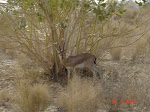Apart from giving the majestic and colorful look to men, turban also acts as a protection shield from the sun. Foreigners love the traditional way of welcome with a traditional turban acco
 mpanied by garland and kumkum. It somehow makes them feel very special. And why only foreigners, even Indians love it. It is the perfect example of treating our guests as gods (atithi devo bhavah)
mpanied by garland and kumkum. It somehow makes them feel very special. And why only foreigners, even Indians love it. It is the perfect example of treating our guests as gods (atithi devo bhavah)The turbans are a long unstitched scarf which is wore as a head dress by men and are a symbol of prestige and social status. The style and length of rajasthani turban keeps on changing with every 20 kilometers. In some areas the size of turban also represents the social prestige. The length of the turban can vary between 5 feet to 82 feet, but normally it is 9 feet long. In ancient times the Rajas used to have specially trained courtesans to tie their turbans. Today, ‘turban tying’ has emerged as a popular event in festive gatherings and fairs- be it the famous “pushkar mela” or any other local social gathering.
Each color has a meaning! And each style says something! The distinct style of the turban has a special significance in Rajasthan. Saffron or orange colored turban is generally worn at weddings, though in past it used to represent chivalry. Turbans of specific colours are worn on specific occasions. A white turban is usually worn at the funeral process .Whereas blue, dark maroon and Khaki colored are for condolence and sombreness
The presence of the caste as dividing and discriminating factor is evident in deciding the colour of turbans also. Each major caste has its own distinct colour of turban. Shephards in the region wear red turbans whereas bishnois wear white turbans. Some other nomadic tribes of the region wear printed turbans.
Apart from the different colors allotted to different castes, turbans of different colors are also categorized for different occasions/festivals. The red and black tie and dyed turban is generally worn at diwali time and the falgunia turban is worn in the month of march (Hindu month of phalgun) .Yellow colored turban is for basant (spring)and a bright orange is for the dussehara. There are occasions when silk turbans are also worn by the rajputs.
Turbans add colors to the life in the same way as the colorful attire of women to this otherwise barren environment.
Anwesha


2 comments:
very good analyis and observation. Good note.
Understanding turbans is a key to decipher the society per se.
But its only the tip of the iceberg as far as the society is concerned. Most of the young generation do not wear turbans but ironically their midsets remain the same sans turbans.Can you read the invisible turbans on the heads of people of Barmer if yes, this blog is a sure shot.
Post a Comment